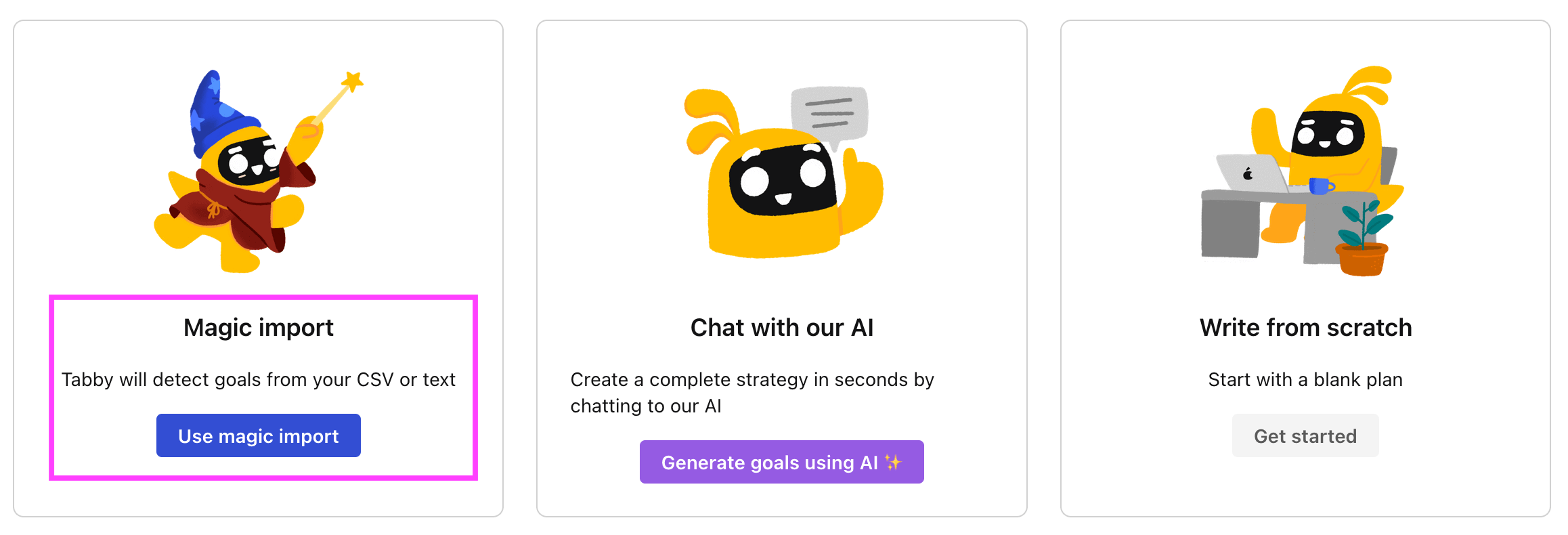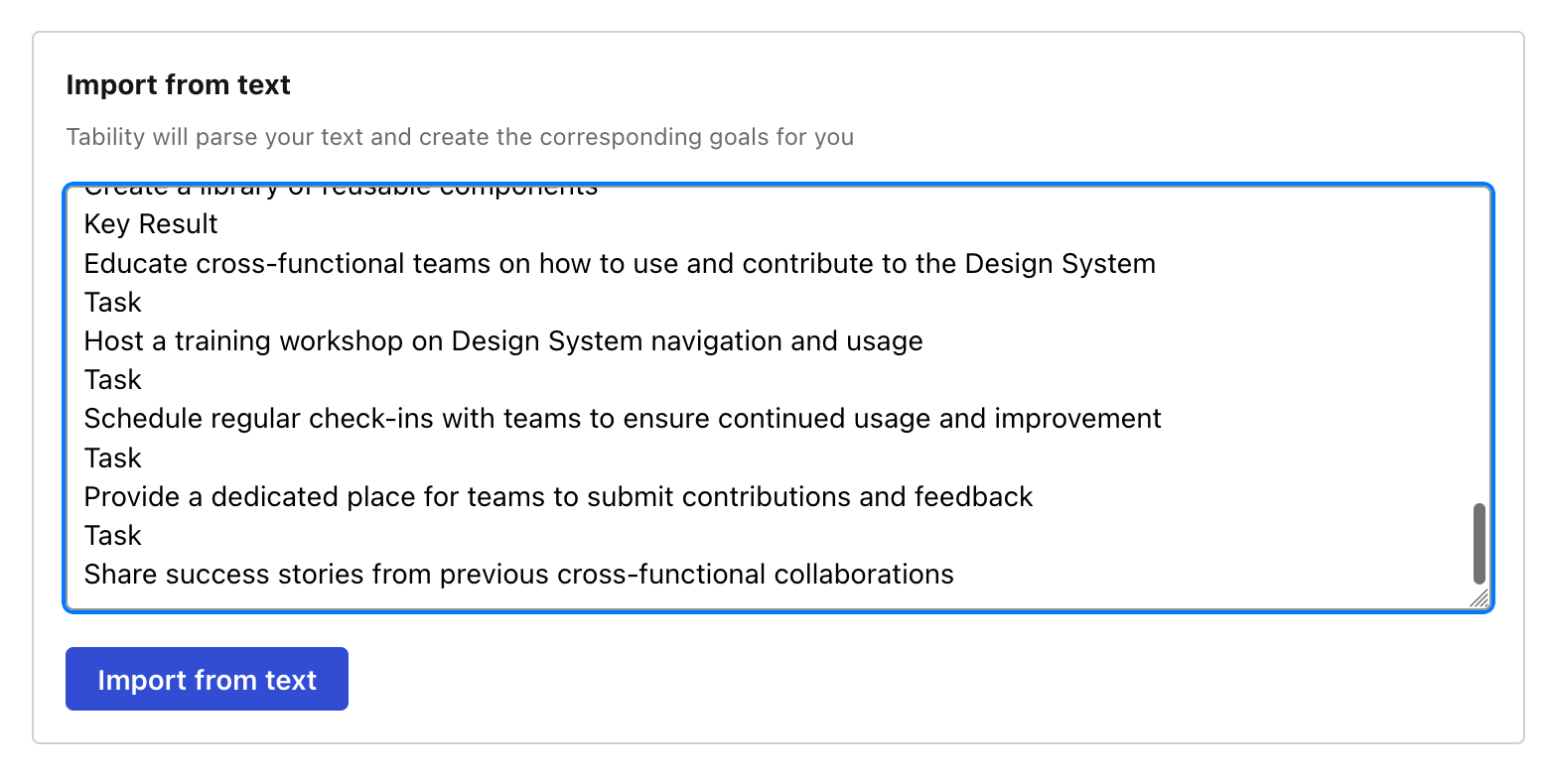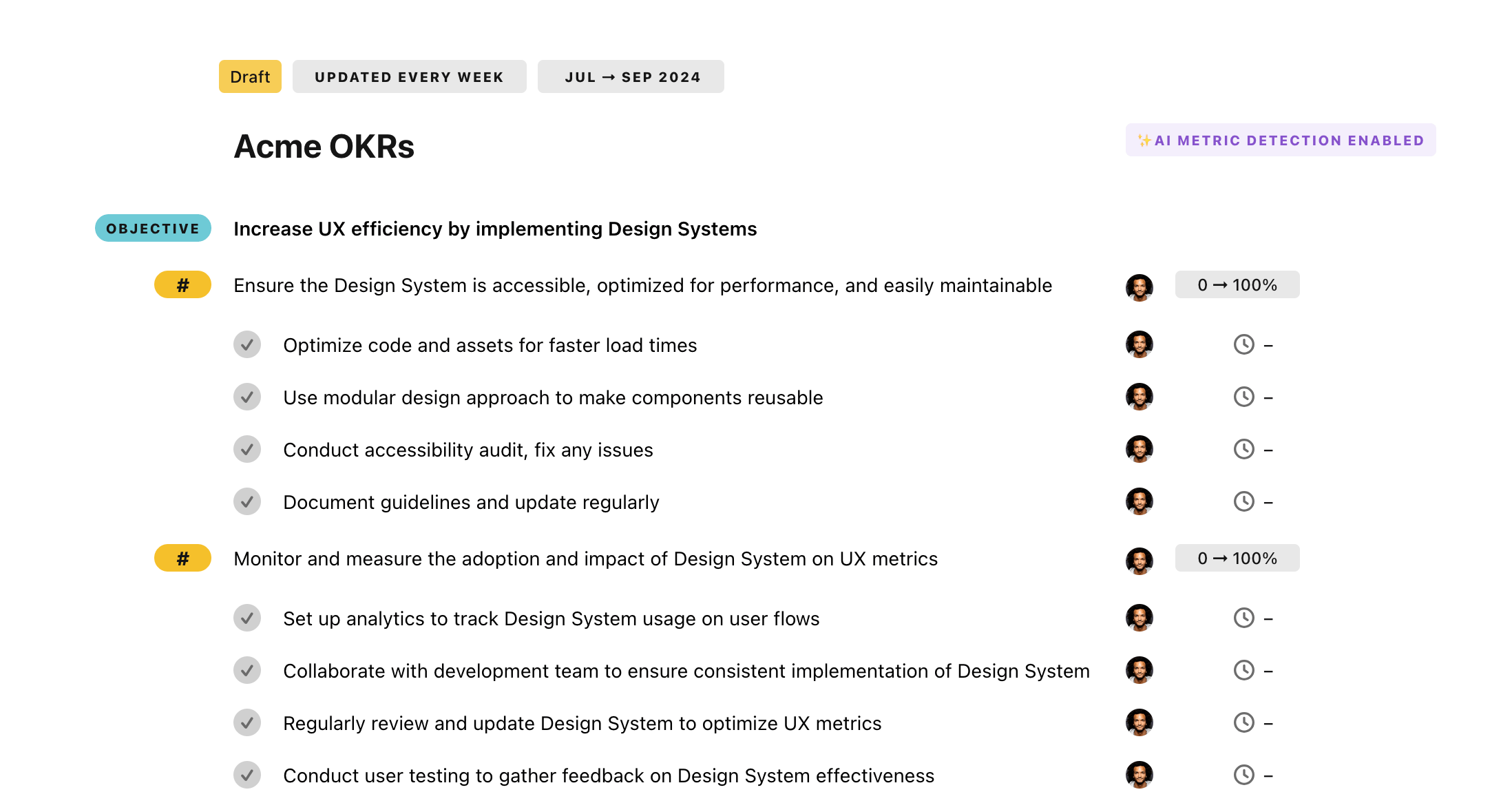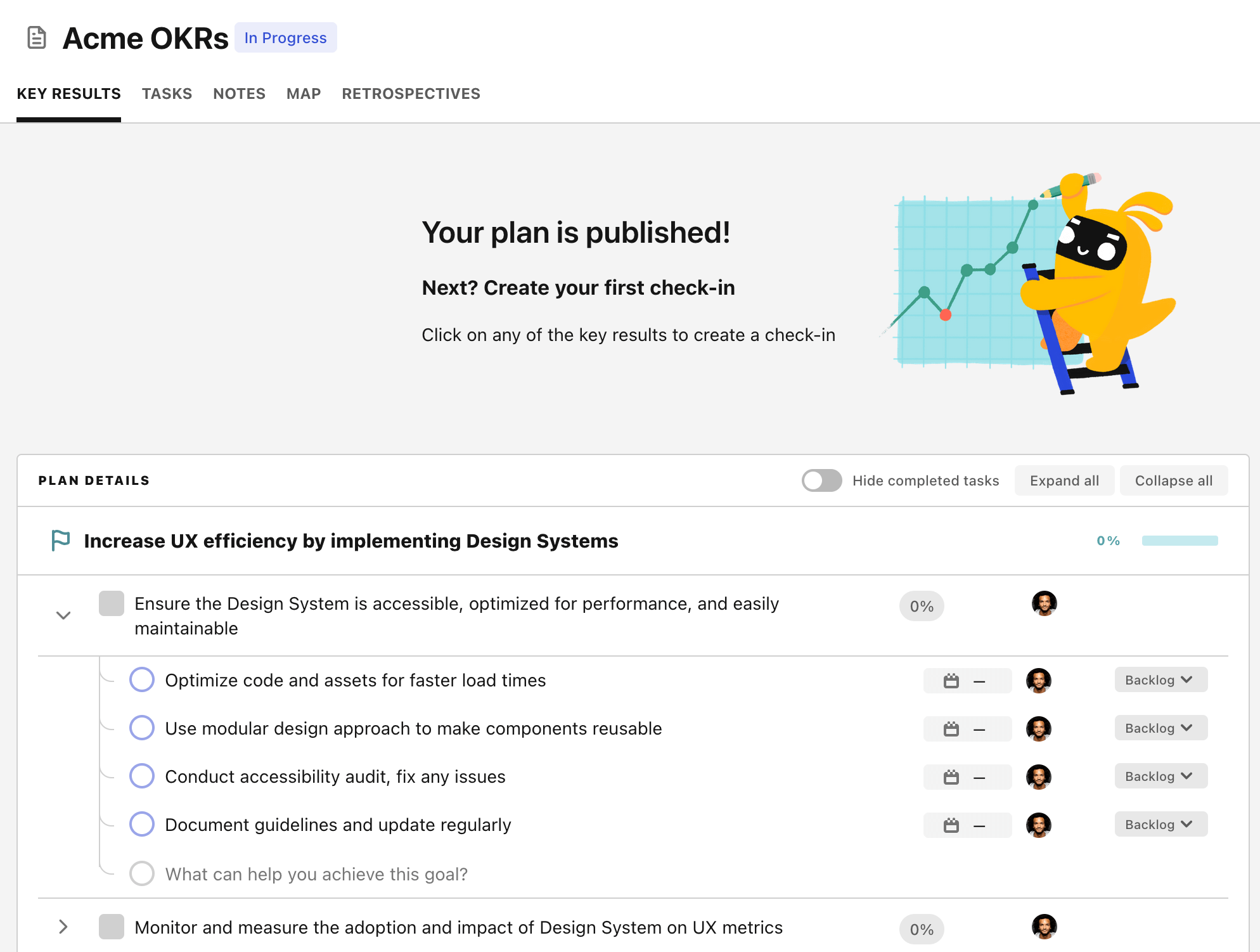OKR template to improve customer experience and satisfaction
Your OKR template
The next objective seeks to magnify positive customer feedback by 25% by inaugurating an incentive program for upbeat client reviews, ameliorating customer service training for frontline staff, and instigating regular post-purchase follow-ups with customers.
The third objective is committed to curtailing the average customer complaint resolution time by 15%. This can be achieved by formulating initiatives such as training staff on effective complaint resolution methods, implementing a system for monitoring customer complaints, and prioritizing prompt and effective responses to complaints.
All these combined efforts should lead to an improved customer experience and satisfaction rate, which is the main aim of this OKR.
ObjectiveImprove customer experience and satisfaction
KRDecrease customer service hold time by 10%
Boost training for customer service representatives
Integrate automated self-service options
Implement efficient call routing to specialized representatives
KRIncrease positive customer feedback by 25%
Create incentive program for positive client reviews
Improve customer service training for frontline staff
Implement regular follow-up with customers post-purchase
KRReduce average customer complaint resolution time by 15%
Train staff on effective complaint resolution strategies
Implement a system for tracking customer complaints
Prioritize timely, effective responses to complaints
How to edit and track OKRs with Tability
You'll probably want to edit the examples in this post, and Tability is the perfect tool for it.
Tability is an AI-powered platform that helps teams set better goals, monitor execution, and get help to achieve their objectives faster.
With Tability you can:
- Use AI to draft a complete set of OKRs in seconds
- Connect your OKRs and team goals to your project
- Automate reporting with integrations and built-in dashboard
Instead of having to copy the content of the OKR examples in a doc or spreadsheet, you can use Tability’s magic importer to start using any of the examples in this page.
The import process can be done in seconds, allowing you to edit OKRs directly in a platform that knows how to manage and track goals.
Step 1. Sign up for a free Tability account
Go tohttps://tability.app/signup and create your account (it's free!)
Step 2. Create a plan
Follow the steps after your onboarding to create your first plan, you should get to a page that looks like the picture below.

Step 3. Use the magic importer
Click on Use magic import to open up the Magic Import modal.
Now, go back to the OKR examples, and click on Copy on the example that you’d like to use.

Paste the content in the text import section. Don’t worry about the formatting, Tability’s AI will be able to parse it!

Now, just click on Import from text and let the magic happen.

Once your example is in the plan editor, you will be able to:
- Edit the objectives, key results, and tasks
- Click on the target 0 → 100% to set better target
- Use the tips and the AI to refine your goals
Step 4. Publish your plan
Once you’re done editing, you can publish your plan to switch to the goal-tracking mode.

From there you will have access to all the features that will help you and your team save hours with OKR reporting.
- 10+ built-in dashboards to visualise progress on your goals
- Weekly reminders, data connectors, and smart notifications
- 9 views to map OKRs to strategic projects
- Strategy map to align teams at scale